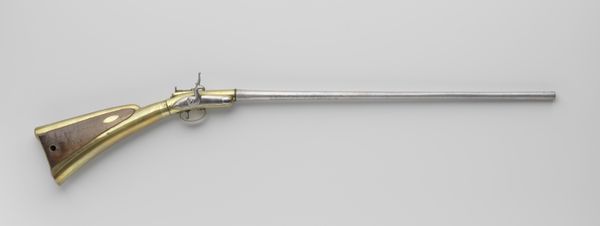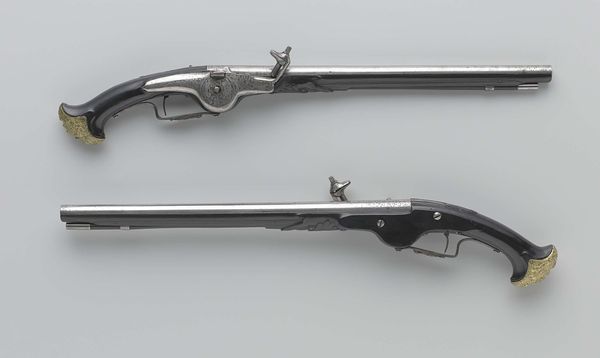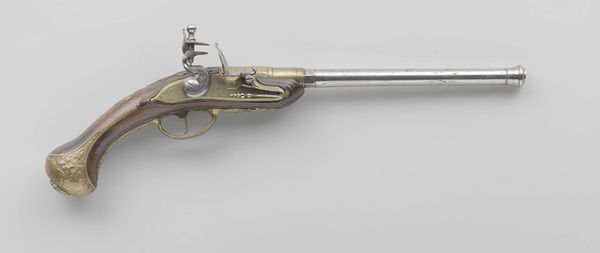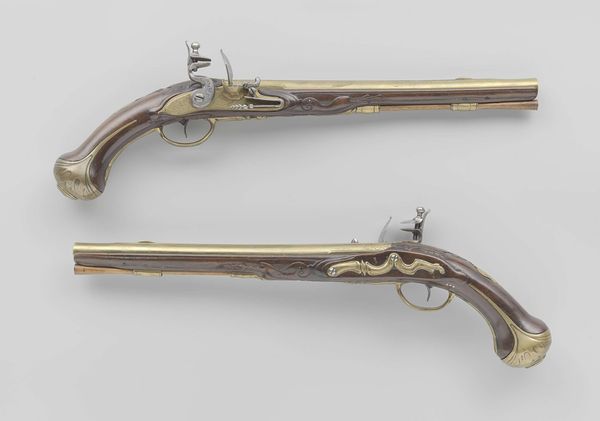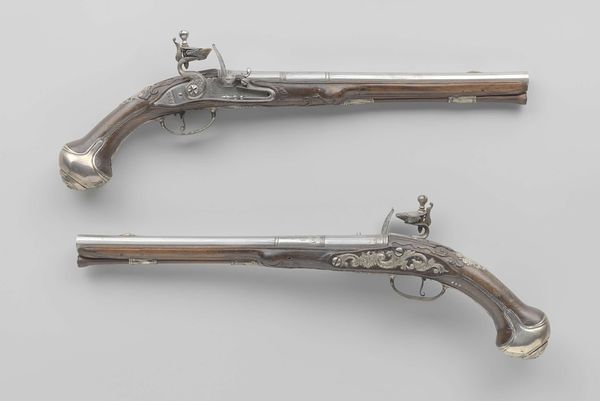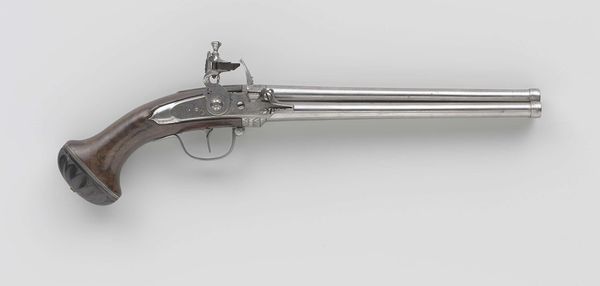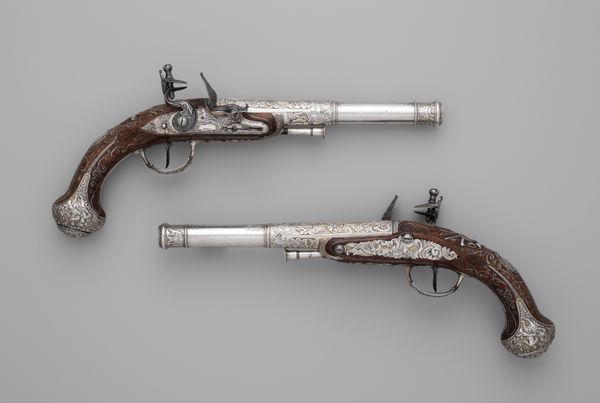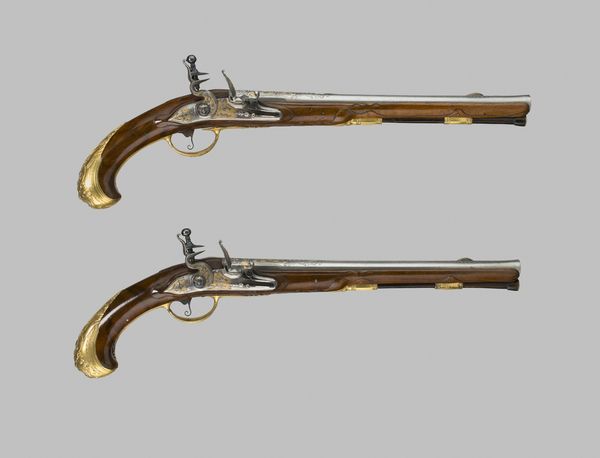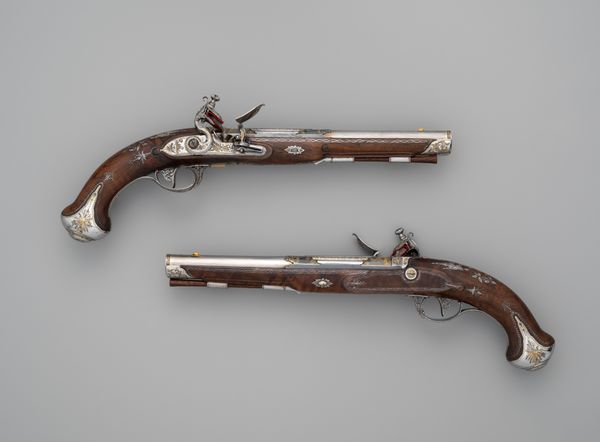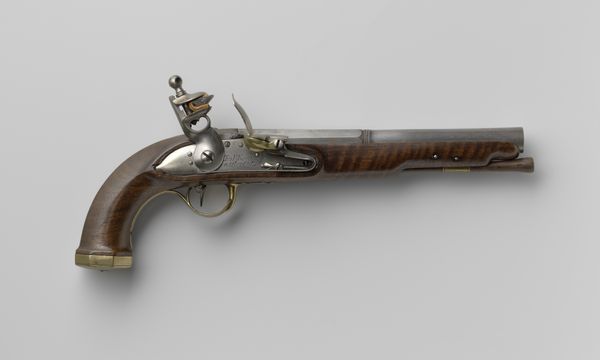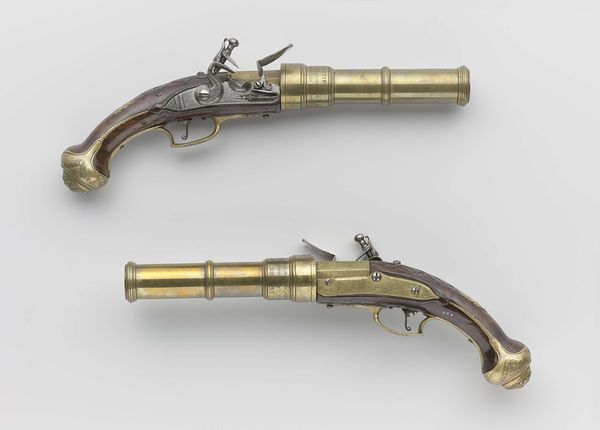
metal, sculpture, ivory
#
baroque
#
metal
#
sculpture
#
ivory
Dimensions: length 44.9 cm, length 32.7 cm, diameter 13.8 mm, weight 815 gr
Copyright: Rijks Museum: Open Domain
Curator: Before us we have a pair of flintlock pistols made between 1660 and 1665, created by Jan Hermans. Notice the stunning contrast between the polished metal and the warm, ivory tones. Editor: My immediate thought is, what a strange confluence of opulence and violence! It’s unnerving, this decorative firearm. Curator: The structure itself is quite masterful, isn't it? Consider the balance struck between the heft of the metal barrel and the elegantly curving ivory stock. It suggests power, but refined, almost playful with the sculptural carving. The symmetry between the two guns intensifies this formal balance, giving them an uncanny harmony. Editor: I'm more interested in the ivory. Think of where it came from—the tusks, the animals sacrificed. Each gun represents not just craft and Baroque aesthetics, but also a brutal, colonial economy that thrived on exploitation of both human and natural resources. Who were the makers of such luxurious objects? And who then handled them? Curator: I cannot dismiss the intrinsic beauty of this object. Consider how the maker played with line and form, achieving a piece that's as much sculpture as weapon. It's not just about the end-use—though it obviously served a function—it's about a successful marriage between aesthetic form and functional design. Semiotically, the weapon embodies power and status within Baroque social structure. Editor: I understand what you're getting at, yet the ivory dictates much of my experience. Its pale hue and density remind me that this objet d'art once had an animal origin. How does the embodied violence that resulted in its material substance affect one’s engagement with such objects, with such overt symbols of privilege and death? Curator: Certainly, those contextual aspects hold importance. Yet, focusing solely on the raw material risks overlooking how this gun transcended its initial components into an object with formal properties. Editor: I feel they cannot be separated from the historical and the physical act of producing these firearms from their materials. Appreciating their impact then includes exploring the complex interplay between aesthetics, power, and extraction. Curator: Perhaps true beauty rests within paradox—between aesthetic achievement and embedded history. Editor: Yes. By questioning its production and origin, we engage in meaningful reflection.
Comments
No comments
Be the first to comment and join the conversation on the ultimate creative platform.
